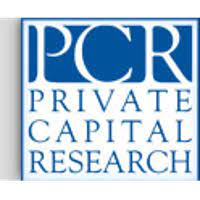Current Research
2016
-

PCRI/State Street Quarterly Newsletter 4Q 2016
The State Street Private Equity Index (GXPEI) posted an overall return of 2.58% in the fourth quarter of 2016 and 10.36% for 2016. Buyout recorded the highest annual return of 12.52% as of Q4 2016 across strategies, followed by Private Debt with a 10.39% gain and Venture Capital with only 2.84% (see Exhibit 1). Compared to 2015, private equity overall return increased significantly in 2016, driven by stronger Buyout and Private Debt performances, Venture Capital, however, weakened considerably (see Exhibit 1).
-

Data Description Article 2
This is the second in a series of articles about the Private Capital Research Institute database. These articles are aimed to provide a brief overview of the research being done at the PCRI and the data that is being collected. For more specific details on the database (for instance, variable definitions and database structure), please refer to the PCRI Data User Manual.
-

2016 AEA Conference
Making Private Data Accessible in an Opaque Industry: The Experience of the Private Capital Research Institute. Private markets are becoming an increasingly important way of financing rapidly growing and mature firms, and private investors are reputed to have far-reaching economic impacts. These important markets, however, are uniquely difficult to study. This paper explores these challenges, as well as the ways they can be overcome, using the experiences of the Private Capital Research Institute as a case.
2015
-

PCRI/State Street Quarterly Newsletter 4Q 2015
The GX Private Equity Index saw an overall return of 1.11% in the fourth quarter of 2015 with buyout and venture capital recovering modestly from their losses reported in 2015Q3 and private debt extending its loss by -0.88% (see Exhibit 1). The recent fluctuations in private equity returns resonate with the increased volatility in the public market in the second half of 2015. For the full year, the GX Private Equity Index returned 6.55% outperforming major public equity and fixed income indices (see Exhibit 2) in the U.S.
-

PCRI/State Street Quarterly Newsletter 3Q 2015
In the third quarter of 2015, the GX Private Equity Index dropped 1.37%, the first negative return after 12 quarters of uninterrupted gains. With growing uncertainty about the global economy and a significant spike in public market volatility over the past six months, the private equity market appears to be taking a pause as well.
Other
-

Data Description Article 1
This is the first in a series of articles about the Private Capital Research Institute database. These articles are aimed to provide a brief overview of the research being done at the PCRI and the data that is being collected. For more specific details on the database (for instance, variable definitions and database structure), please refer to the PCRI Data User Manual.
-

Michael Ewens Research: The Impact of a Declining IPO Market on Venture Capital
One area of research is the impact of the changing initial public offering (IPO) markets on venture capital investments and, consequently, the impact on entrepreneurship, innovation and employment. The last decade has seen a large drop in the number of IPOs in the United States. According to Professor Jay Ritter at the University of Florida, from 1980-2000, an annual average of 310 operating companies went public in the United States; but the annual average of IPOs in the U.S. between 2001-12 was only 991 companies that go public seek funds to grow, innovate, and further create jobs.
-

Agrawal and Lerner Research: A Study on the Impact of Private Equity Investments on Organized Labor
While the aggregate employment impact of private equity has been carefully examined,1 quality of those jobs remains poorly understood. Anecdotally, accounts are plentiful of private equity groups weakening unions, reducing pension benefits, and exacerbating work conditions;2 systematic evidence one way or another.